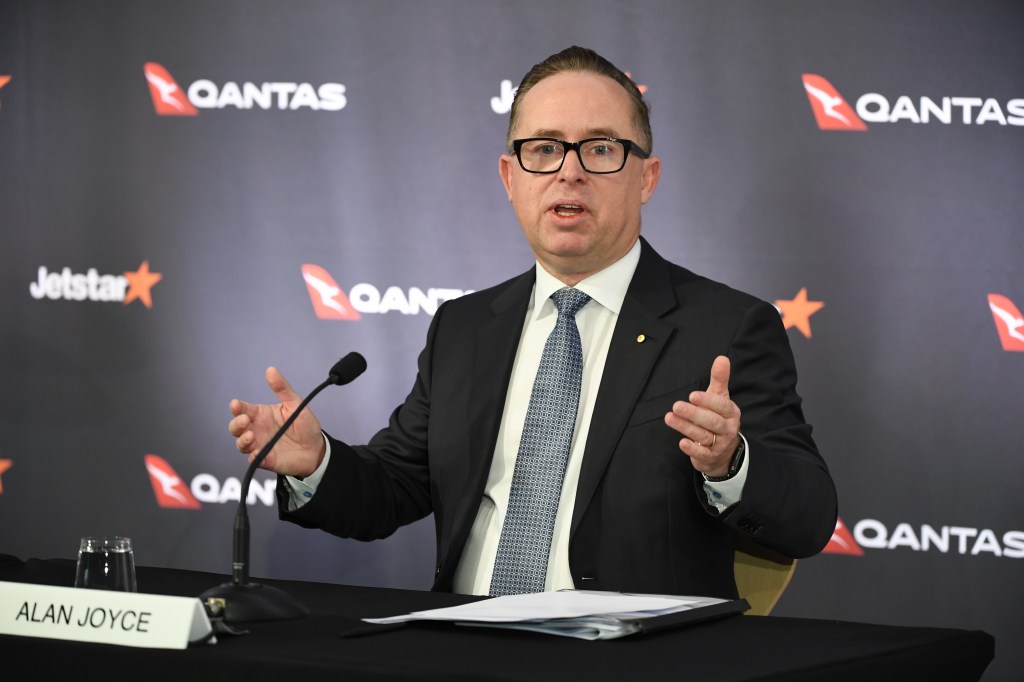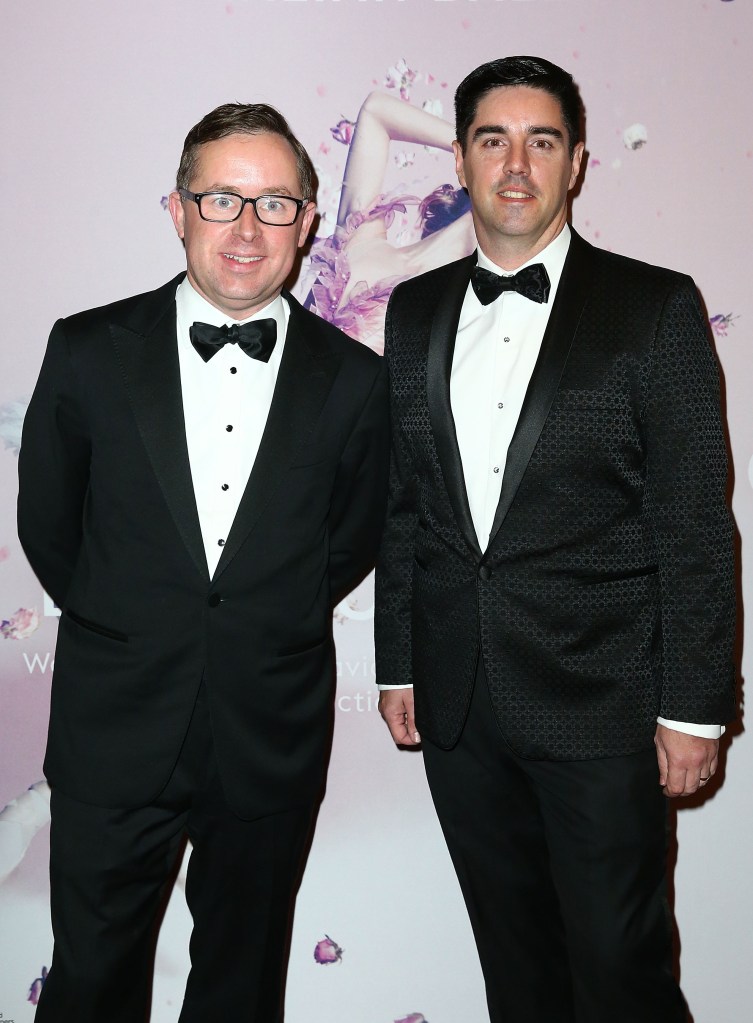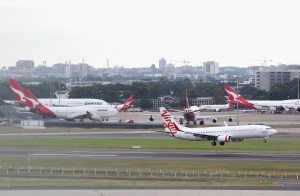Qantas is rebuilding its capacity, but its reputation needs a reboot.
Key Takeaways
- The airline is working to turnaround the effects of lockdowns and border closures
- Qantas needs to stay competitive as customer-service criticism rises, challenging loyalty
- Fuel costs are up as Russia’s invasion of Ukraine hits exports and commodity prices

Massive queues were filmed snaking through airports as school holiday departures took off this year, with Australians desperately trying to escape, following previous covid-induced lockdowns and border closures. Social media blew up, with Twitterati complaining about everything from flight delays and cancellations, lost baggage and lengthy waits on customer-service phone lines.
Qantas boss Alan Joyce, 56, remained stoic at the time, admitting nothing with regard to any failing or inadequacy of the services provided, only that: “We saw an incredible rebound in domestic travel as state borders re-opened and we’re seeing the same thing now as more countries relax restrictions.”
By late August, the extent of the damage to the airline’s reputation prompted an apology and a raft of offers to appease angry customers.
Despite all the problems and complaints, Joyce’s total pay jumped from $1.98 million to $2.27 million in the 12 months to June 30, 2022.
Before the pandemic hit, the company’s 2018 annual report shows Joyce took home a salary, including share price growth, of $24.584 million for 2017, topping the list for Australia’s highest paid CEOs at the time. The Dublin, Ireland-born Qantas Group CEO and his husband, Shane Lloyd, this year bought one of Sydney’s most prestigious harbourfront mansions for $19 million.

Joyce, a mathematics progeny who has a Master of Science from Trinity College, has been leading the Group since 2008. Having slashed annual costs by $2 billion to survive in 2014 and beyond, a reinvented Qantas was generating stellar profits and celebrating its centenary year in 2020 when the covid-19 pandemic gate-crashed the party.
The financial hit was immense. In February 2022, the airline booked a $1.28 billion loss for the six months to 31 December 2021, worse than the $1 billion loss posted in the previous corresponding period. In August, for the full 2022 financial year, the airline announced its underlying loss had widened to $1.86 billion.
Russia went to war against Ukraine just as the airline business began to rebound. Fuel prices have soared as a result of the conflict. Qantas has responded by lifting ticket prices by around 7% and is maximising passenger load factors.
Haemorrhaging cash
Fuel prices have always been a major drain for airlines. In 2014, Qantas was haemorrhaging cash as high fuel prices, over-capacity and rampant domestic and international competition were savaging profits, a scenario Joyce described then as “a perfect storm”.
His answer was to unveil plans for an accelerated Transformation Program in February 2014 “to create a leaner, more focused and more sustainable airline”. The implementation costs plunged Qantas $2.8 billion into the red – a record loss.
The centrepiece was a $2 billion cost-cutting program involving everything from faster aircraft turnarounds to saving fuel by optimising routes. The workforce was cut by 5,000, or 15%. The fleet was rationalised and orders for new aircraft were deferred or restructured. Unprofitable routes were dropped, planes were changed on other routes to match capacity with demand and Joyce took a 36% pay cut.
Turnaround
The restructure delivered one of the most remarkable aviation turnarounds in history and the airline was in the best shape possible to survive the looming pandemic-induced crisis.
In June 2020, after months of lockdowns and border closures as covid hit the world, Joyce announced a three-year recovery plan, with a goal to carve yet another $1 billion a year off annual operating costs by the end of FY2023.
Another 10,000 Qantas people would lose their jobs, slashing the workforce by more than 30% to around 22,000. An additional $1.9 billion of equity capital was raised and $1.75 billion of the Group’s $5.9 billion debt was excised from the balance sheet. Joyce took an 83% pay-cut this time.
Qantas and Jetstar had 62% of the domestic market share, with Virgin at 34% in March, according to the Australian Competition and Consumer Commission. Joyce is aiming to grow market share to 70% by adding and opening additional routes.
“Our flights from Perth to London are heavily booked, we’ve fast-tracked the return of our A380 fleet which will free up our 787s to operate new routes, including Melbourne to Dallas, and we’re deploying A330s to other new destinations, including India and South Korea later this year,” Joyce said in June.
With rumours circulating that his tenure at the top could be nearing an end, Joyce is up for a fight. After announcing a $5000 recovery boost for 19,000 employees in late June, he then issued an edict effectively banning staff from taking industrial action to challenge pay deals under consideration.
Queensland and Northern Territory Aerial Services Ltd (QANTAS Ltd) was founded in November 1920 by two World War One veterans Paul McGinness and Hudson Fysh, who envisaged creating an air service connecting Australia to the world.
The business they established in the Queensland outback town of Winton has been in a permanent state of reinvention ever since due to the ongoing impact of technological advancements, but perhaps the greatest changes occurred after World War Two and the advent of the jet age.
In 1947 the Commonwealth government owned half the shares in Qantas Empire Airways Ltd and paid £455,000 to buy out the shareholders in Qantas Ltd who owned the other 50% as part of a post-WW Two capitalisation plan to fund expansion and growth.
From 1959, the jet age halved flying times with Boeing 707s and later the 747, accelerating Australia’s connection via Qantas with the rest of the world.
In 1992 Qantas was merged with Australian Airlines and British Airways paid the Federal Government $655 million for a 25% cornerstone stake.
In 1995 Qantas was privatised following the launch of a successful public share offer and Australian Securities Exchange listing.
In 1998 Qantas becomes a foundation member of the new global airline marketing alliance, oneworld.
In 2004 Qantas launched its budget airline Jetstar which begins flying to 14 destinations in Australia.
In October 2011 Qantas CEO Alan Joyce controversially grounded the airline’s entire domestic and international fleet and locks out the workforce without warning as part of a bold and successful strategy to deal with a protracted wave of crippling industrial disputes.
In 2012 Qantas signed a partnership with Emirates allowing it to deliver passengers to Dubai from where they could plug into dozens of routes into Europe.
In 2014 Qantas instigated a Transformation Program to slash annual costs by $2 billion to deal with high fuel prices, over-capacity and competition which were savaging profits. Implementation saw Qantas report a record $2.8 billion loss, before delivering one of the most remarkable aviation turnarounds in history.
In June 2020 Qantas unveiled a three-year pandemic recovery plan, starting with a goal to carve yet another $1 billion a year off annual operating costs by the end of FY2023.
In June 2022 Qantas responded to rising fuel prices, announcing an additional 5% reduction in domestic flight capacity to 15% until September and a 10% cut from October through to the end of March 2023 to boost passenger loads.
In August 2022 Qantas announced for the full 2022 financial year, its underlying loss widened to $1.86 billion.
Passengers, points and the price of loyalty
- One of the Qantas Group’s best performing business units throughout the pandemic has been Qantas Loyalty – underpinned by 14 million Frequent Flyer members. It was established in 1987.
- For the full year 2022 results, revenue was 36% higher at $1.33 billion.
- “Despite the lack of flying, members earned and used large volumes of points on the ground, customer satisfaction reached record levels and the business delivered strong earnings for the Group,” he said. “I don’t think any other airline loyalty program managed to do that.”
Webjet B2B pivot brings results
- Webjet managing director John Gusic brought global digital travel business Webjet back to profit in 2022.
- Webjet began as a small start-up in 1998, hoping to disrupt the online travel industry. By 2013, the company was highly focused on the Australian domestic travel market, but started to expand into wholesale travel, pushing into the B2B market. The move into the B2B space globally over the years has decreased reliance on any customer, market and supplier segment.
- Gusic sees growth opportunities and continues to expand with full or partial acquisitions of businesses such as Trip Ninja and Roomdex in 2022. However, it has given no guidance for 2023 earnings. First-half 2023 results are scheduled to be announced in November.
Deal makers bring Virgin Australia back to life
Saving Virgin Australia was such an incredible feat that the restructuring team at Deloitte became the first Australia-based company to win New York’s Turnaround Management Association’s international business turnaround of the year.
“The rescue of Virgin Australia has rightly earned a place in Australia’s aviation and corporate history.”
– Timothy Sackar, Partner at Clayton Utz
With 50 stakeholder groups, 2,000 creditors and an airline with debts of $6.8 billion, the turnaround saved 6,000 jobs and delivered the restructured airline to Bain Capital, all within 10 weeks, beginning in April 2020 after the airline was grounded during covid lockdowns. By October 2020, Bain Capital, a private equity firm based in Boston, in the US, had bought the airline for $3.5 billion.

“Our focus was always on the interest of creditors, but we recognised that as Australia’s only alternate national airline, it was extremely important that Virgin had the best possible opportunity to re-emerge as a viable contributor to Australia’s future,” Deloitte turnaround and restructuring national leader Sal Algeri said.
The Clayton Utz legal advisers were also recognised for their part in the restructure and sale, winning International Company Turnaround/Transaction of the Year at the Turnaround Management Association’s 2021 awards.
Restructuring and insolvency national practice group leader Timothy Sackar said: “The rescue of Virgin Australia has rightly earned a place in Australia’s aviation and corporate history.”